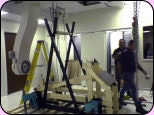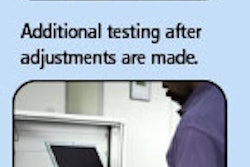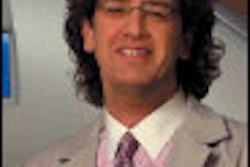The old adage that "Time is money" may be most applicable in healthcare. When radiology equipment is not in use, patients are not receiving essential care and the facility itself is not making -- and, perhaps more likely, is losing -- revenue.
With healthcare facilities imaging more patients in shorter amounts of time and extending hours of daily operation, equipment uptime is a critical component to patient throughput and department efficiency. Equipment uptime of 97% is the norm -- but many facilities are pushing that boundary in the quest for greater efficiency.
Standard uptime at the Medical University of South Carolina (MUSC) in Charleston is 98%. While that number looks good on paper, chances are there still may be some unhappy patients and caregivers in the remaining 2%.
"We try to go beyond those figures, but perception is everything," said Stan Trojanowski, MUSC's manager of biomedical engineering. "If you don't communicate with your customers, then they will be unhappy, regardless of the fulfillment of uptime. If you have a system down for a few days, everyone will remember that for a year."
"If you have a system down for a few days, everyone will remember that for a year."
-- Stan Trojanowski, Medical University of South Carolina, Charleston
For Trojanowski, the biggest challenge in maintaining equipment uptime is scheduling preventive maintenance (PM). The goal, of course, is to perform PM as needed without adversely affecting patient exam time. MUSC looks to perform as much PM during regular daytime hours as possible, coordinating in advance with radiology staff to schedule a one-hour window. In some cases at MUSC, overtime and extra charges are paid by the user department to motivate staff to be more flexible in making the equipment more available for PM.
Tough choices
Of all medical imaging modalities, the department least able to be flexible is the cath lab. "PM work, especially in cardiology, is most difficult, because one hour is so many thousands of dollars," Trojanowski said. "The argument that they are losing revenue (when the cath lab is offline for preventive maintenance) is a strong one."
"We are seeing fewer true component failures, but when they do fail, the cost can be high."
-- Steve Bursaw, Allina Clinical Equipment Services, Minneapolis
The same situation holds true for Allina Health System of Minneapolis. Its service and maintenance arm, Allina Clinical Equipment Services (ACES), coordinates with the radiology department on the PM schedule about 45 days in advance to find a time during the day when the equipment may not be in use or if the clinical staff is away for training. Not only does advance scheduling minimize downtime, but it also can save money with by eliminating overtime.
"We can get in so there is no off-hour overtime," said Steve Bursaw, technology manager at ACES. "If we are bumped, we have to either work with our service provider -- who is under agreement do some of the servicing -- or our in-house folks will alter their schedules to accommodate the department."

Service technician Kevin Emerson works on the removal of an older cardiovascular imaging device, as Allina makes more room for the installation of a new flat-panel system. Image courtesy of Allina Clinical Equipment Services.
Multiple vendors
Allina's network includes 12 hospitals and more than 40 clinics in Minnesota, and one clinic in Wisconsin. Allina offers a full complement of imaging services, and it has nine service engineers dedicated to radiology. The only two modalities that Allina does not handle internally are MRI and digital mammography.
The decision whether to service equipment internally or through an outside vendor is made by ACES' Vendor Management department, which works with vendors to determine the best course of action for service. The evaluation takes into account service contract cost, time and materials costs, training availability, number of devices requiring service, and vendor service resources.
Bursaw estimates that his in-house staff covers approximately 65% of service calls, with the remainder handled by outside service vendors. The cost of an OEM service plan is the "primary concern," he said. "We look for some flexibility from our outside service vendors in terms of their ability to offer some nonboilerplate-type plans that would help us, considering we do have the internal resources."
That flexibility runs the gamut from parts-only service agreements to full-service deals. "Generally, we are trying to get an agreement that provides all the parts we need, extended hours of service until 9 or 10 o'clock at night, and service engineer support when we are beyond our capabilities," he added.
Parts availability
The OEM service provider's greatest contribution to uptime and department efficiency is in parts availability and the ability to ship parts overnight or the same day an order is received. "We get them (the OEMs) to think of us as if we were their service people," Bursaw said. "We also get specific passwords to order the parts."
Needless to say, if parts are not available quickly, an inoperative imaging device becomes a huge, expensive paperweight.
John Davidson, president of New England Health Imaging (NEHI) of Concord, MA, described NEHI's service agreement with one of its vendors as an "insurance policy." "We pay a premium that covers necessary parts to keep the MRI systems going," he said.
NEHI provides MRI services with four fixed sites in Massachusetts, and three fixed sites and two mobile MRI scanners in Maine. The company employs one full-time engineer in Massachusetts and another full-time service technician in Maine.
NEHI partners with one OEM service contractor, which fills the service gaps by helping NEHI service engineers with issues they cannot solve and by providing prompt parts availability and shipping. The vendor also trains NEHI service engineers on its MRI equipment and covers service calls when they are on vacation or busy on another assignment.
The combination of in-house and outside service options results in greater uptime for NEHI's MRI systems, optimum patient care, and more revenue for the company. "If you have more uptime, you don't have any cancellations when patients come in and you don't have to reschedule," Davidson said.
Under its contract with the vendor, NEHI technicians are the first responders to service calls, as is the case in many service agreements. The so-called "reduced maintenance agreement," Davidson said, provides cost savings to NEHI, which more than offsets the cost of NEHI having its own in-house service engineer.
Combining resources
MUSC uses a combination of in-house and OEM service to support its radiology department, which, in turn, supports a 600-bed hospital and three outpatient centers. MUSC plans to open a cardiology hospital next year and, as a result, increase its total number of angiography rooms from five to nine and its catheterization/EP labs from five to seven.
The annual service budget for imaging equipment is approximately $4 million, and its imaging equipment comes primarily from three multimodality OEMs. MUSC has service contracts with all three vendors, with one OEM acting as lead service provider and supplying an onsite service manager to help coordinate service management.
In terms of dollars, the breakdown is about 70% to 30% in-house staff versus outside vendors. The internal service staff also dominates total labor hours. MUSC staff handles first response on the first level of service calls on imaging equipment, such as portable x-ray and C-arm service, with its lead OEM providing parts and supplemental outside labor with an annual cap on service cost. No matter what the service cost over the year, MUSC will only pay that amount to its lead OEM. Above that figure, the OEM will reimburse MUSC for its staff's labor at a set rate per hour.
MUSC also takes advantage of remote diagnostics provided by its lead OEM, which monitors the imaging network. The OEM service center receives signals from the major modalities, such as CT, MRI, and cath lab equipment, and detects and anticipates percolating problems.
MUSC has cooperative pacts with its other two OEMs, with MUSC responsible for first response.
Extended service
Allina occasionally will opt for extended service agreements with its vendors to cover off-hour service and repairs, though that option may come at an additional cost.
Though Allina -- like many healthcare facilities -- is responsible in most cases for handling a service call initially, the healthcare system relies on its outside vendors to commit to their standard response time of two to four hours when needed. A four-hour maximum response time is more acceptable during off-hours or in the evening.
While new imaging technologies have been influential in improving uptime and increasing patient throughput with shorter scan times, the advance hasn't necessarily made the lives of service technicians more relaxed. A hospital can perform more scans and handle more patients with a 64-slice CT system, but Allina has not seen a reduction in service calls for the technology.
"We are seeing fewer true component failures, but when they do fail, the cost can be high," Bursaw said. "That's one of the reasons we have agreements with the vendors to supply the parts." To help manage that cost, Allina includes a parts guarantee as part of its OEM service contract.
Bursaw estimates that Allina has held steady with an imaging equipment uptime rate of 96% to 97% over the last five years. Its linear accelerators are in the 98% to 99% uptime echelon. Compared to five years ago, clinicians are using the modalities more hours in the day, and more patients are being served.
By Wayne Forrest
AuntMinnie.com staff writer
March 1, 2007
Copyright © 2007 AuntMinnie.com



















